Revised | Originally Published: May 26, 2022 @ 10:05 am
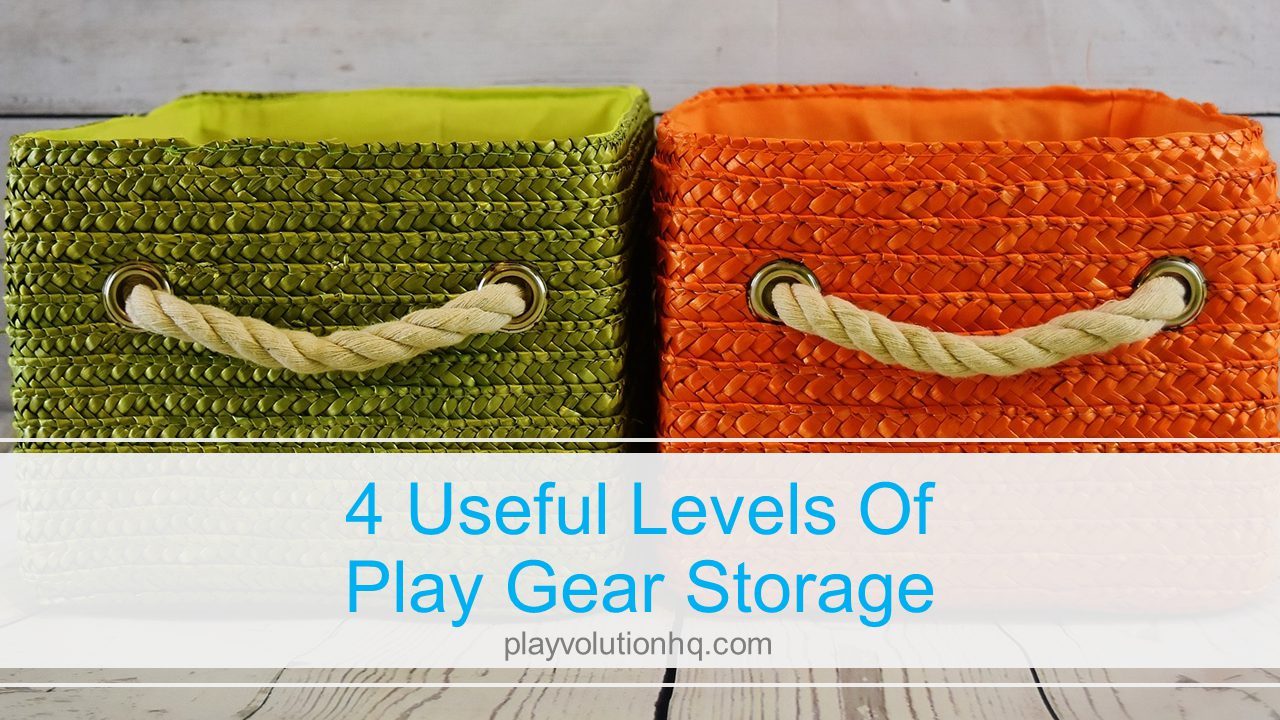
Table of Contents
Why Focus On Play Gear Storage?
Effectively supporting children at play requires a certain level of organization when it comes to storage. An environment where kids can access the most commonly used materials on their own is an environment that supports autonomy and trusts children as capable Doers Of Things. Not only is Travis empowered when he can access the scissors on his own, but self-service access to gear frees up the classroom’s adults for other things.
But it’s near impossible–and highly impractical–to have everything close at hand all the time. In cases where kids can’t access things on their own, the adult in charge of the environment should be able to easily access materials when they are needed. For example, when Kim pleads, “I need more green paint, I’m making a picture of Love!” you need to know where to find the big container of green paint so she can properly represent Love on that huge sheet of butcher’s paper.
Over nearly 30 years of supporting play, I came to realize that this organization became easier when I maintained three levels of play gear storage: Deep Storage, Child Accessible Storage, and Out For Use Storage. Let’s dig into them.
Level 1 | Deep Storage
When I talk deep play gear storage, I’m not talking about a storage situation reminiscent of how they stowed away the Ark of the Covenant at the end of the first Indian Jones movie. That storage was a bit too deep.
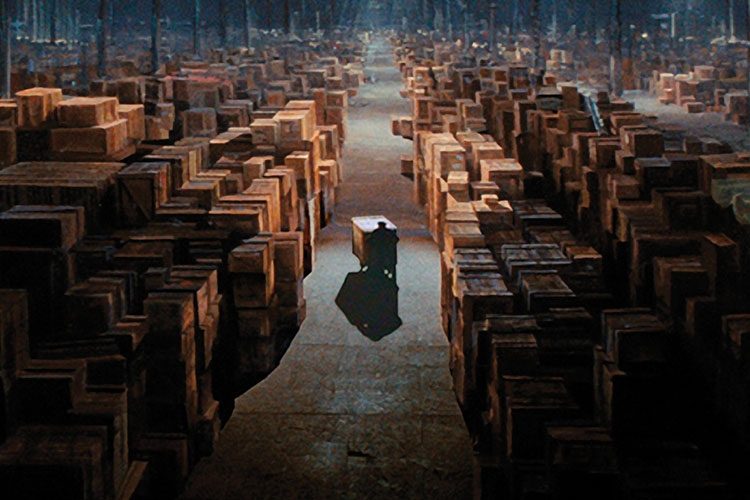
Deep storage is the play gear storage level for items that you don’t use on a regular basis. For example, in my family child care days, we had Baby Gear that went into deep storage when we did not have a baby enrolled. We also had such a large collection of loose parts that there was no way everything could be out for use at the same time. We kept some of this gear in deep storage, rotating items regularly.
Deep storage also serves as a backstock location for consumable supplies. We had a mom who worked for a printing company and would bring in cases of paper. There was no way we could keep it all in the art area, so most of it went to deep storage.
Your deep storage area should be well organized and close to the play space. The deep storage situation in most early learning settings is not ideal. Storage space- if there is any- is seldom adjacent to the classroom, and there never seems to be enough time to keep things organized. Do the best you can, and know that keeping the deep storage space you have well organized makes supporting play much easier. Three-year-old Kim’s panicked “I need more green paint!” is easily addressed when you know right where to find the gallon jug of green tempura paint.
Level 2 | Child Accessible Storage
This level of play gear storage refers to the stuff that’s in the classroom but not immediately accessible by children. This level of storage serves two purposes.
The first is that it limits some children’s access to some materials. For example, maybe Kim headed to a cabinet with a hook latch for the brushes and paint pots because she shares the family child care program’s play space with mobile infants and toddlers. It is not practical to have messy or risky materials out for use at all times in mixed-age settings. With child-accessible storage, older kids can access these items when they need them. When not in use, items get tucked away. This also makes it easy to get to things like the paint when the caregiver can actively supervise Toddler Adventures In Painting.
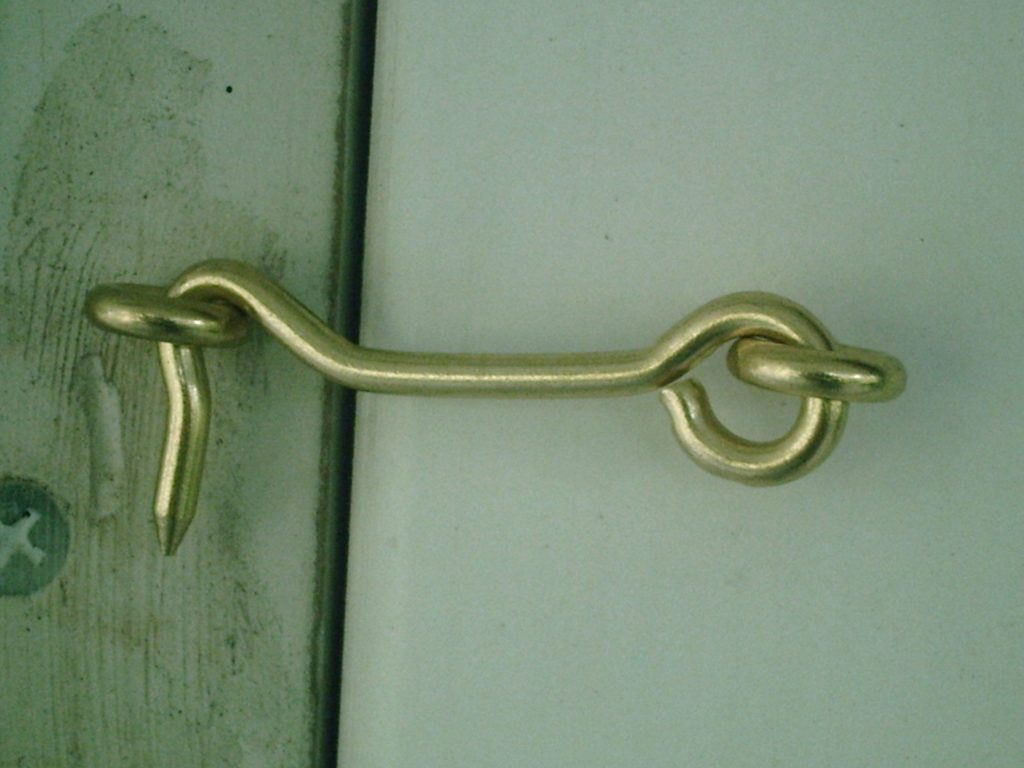
Child-accessible storage also comes in handy for Sometimes Items, which are things that get used frequently but not daily. Programming space does not always allow for everything a child might need to be out and available at all times.
I saw an example of this when hanging out in the process art area of a very child-led preschool program. Two boys came in from outside. One said, “I’ll get the hot glue guns”. The other said, “I’ll get the cardboard and scissors.” Then, Kid One went to a nearby cabinet, grabbed a plastic tote full of hot glue and guns, plugged a couple in, and waited for them to heat up as his buddy arrived with the other equipment.
Accessing this level of play gear storage is a rite of passage in many mixed-age care settings. Imagine Kim’s delight when she was old enough to undo the latch and get the paint out on her own for the first time.
Level 3 | Teacher Only Storage
This is easily accessible storage for items only the teacher can access. In some programs, the above-mentioned hot glue guns are stowed in teacher-only storage. Maybe the gallon glue jugs get housed here so the paint pots can be easily refilled. This level of play gear storage is good for materials requiring a bit more supervision–things that can only be done when an adult is fully tuned in and paying attention. Perhaps your collection of slingshots lives here–easy to access when it’s time for learning-rich slingshot play.
Level 4 | Out-For-Use Storage
This final level of play gear storage is exactly what it sounds like–the stuff that’s right there, out in the open, ready for use. This is the Big Time. This is where all the early learning play gear wants to be. The hammers and saws are in deep storage, the clay is in child-accessible storage, and the magnifying glasses are in teacher-only storage- they all yearn to be out for use.
There are many options for storing and displaying items that make it to the Big Time: shelving, plastic totes, wicker baskets, glass jars, hooks, etc. The primary goal here is to make things easy to access when they are needed and easy to put away when it is cleanup time. Durability is important since these items are used much more than other levels. A flimsy cardboard box may last for years, full of items in deep storage, but would be crumpled and ripped after a few days as an out-for-use storage option.
Aesthetics is a secondary consideration. Those out-for-use items are there for the world to see, on display during every tour, and in the background of every Instagram post. While the focus should be on function, some attention should be paid to how things look.
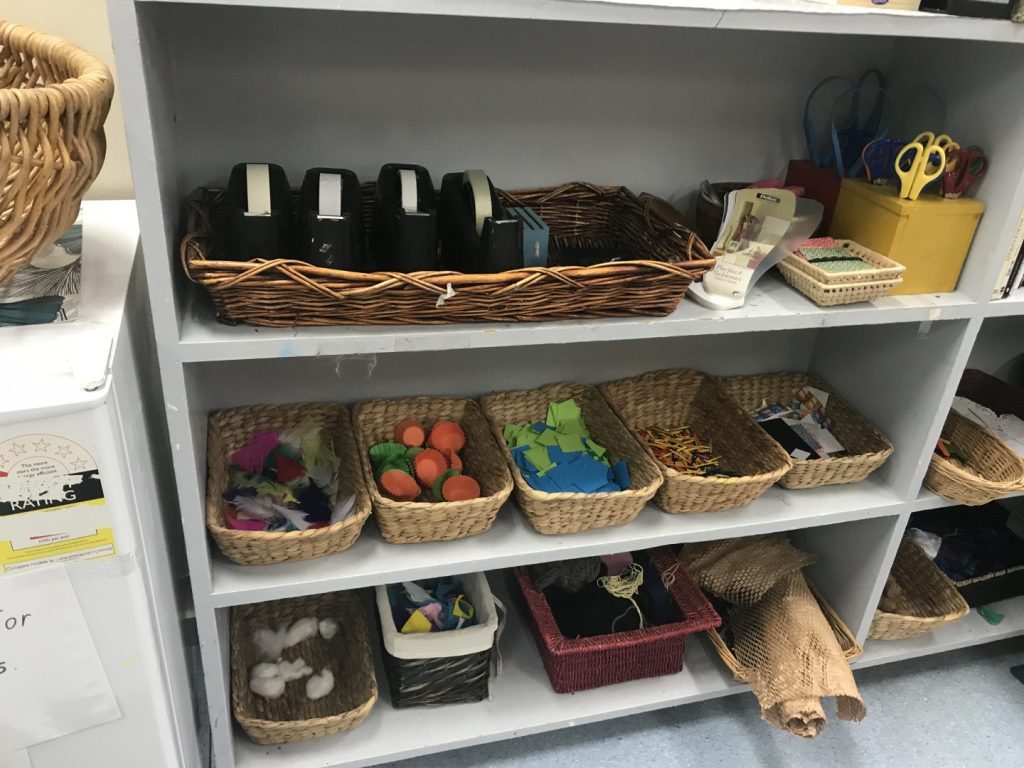
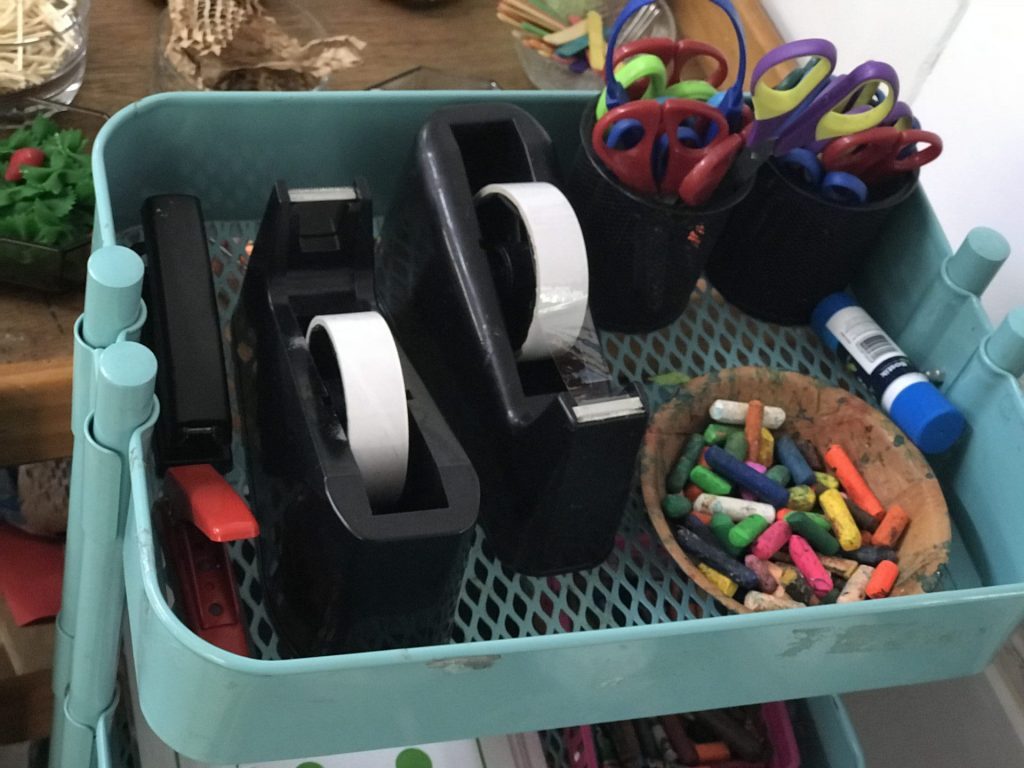

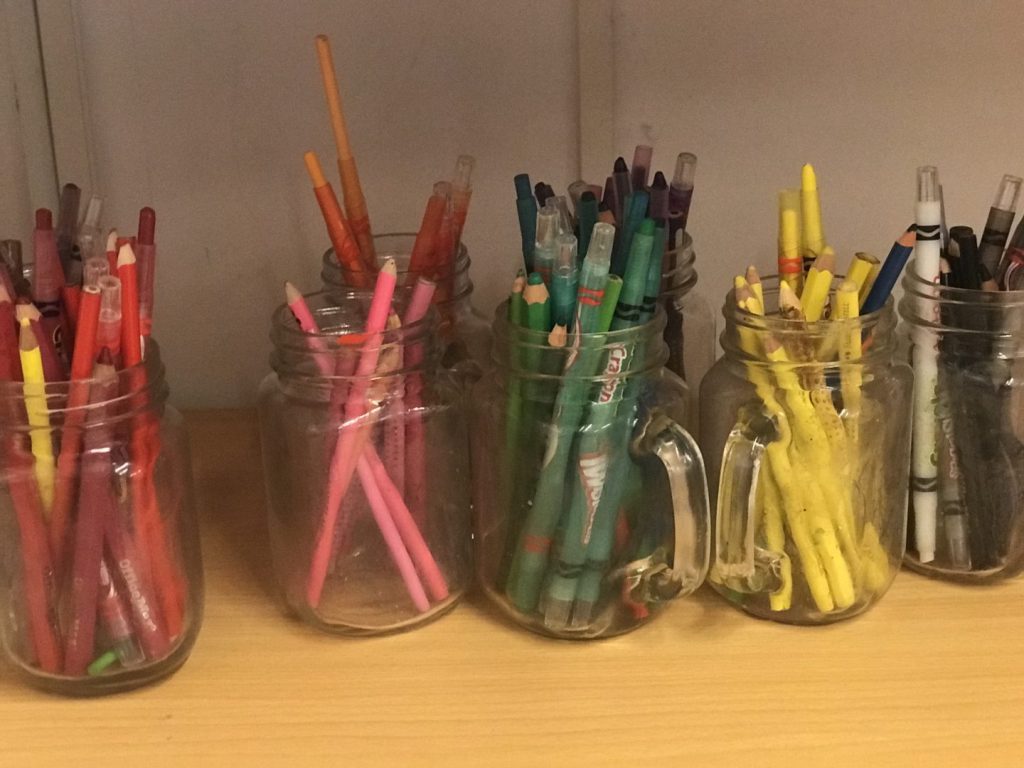


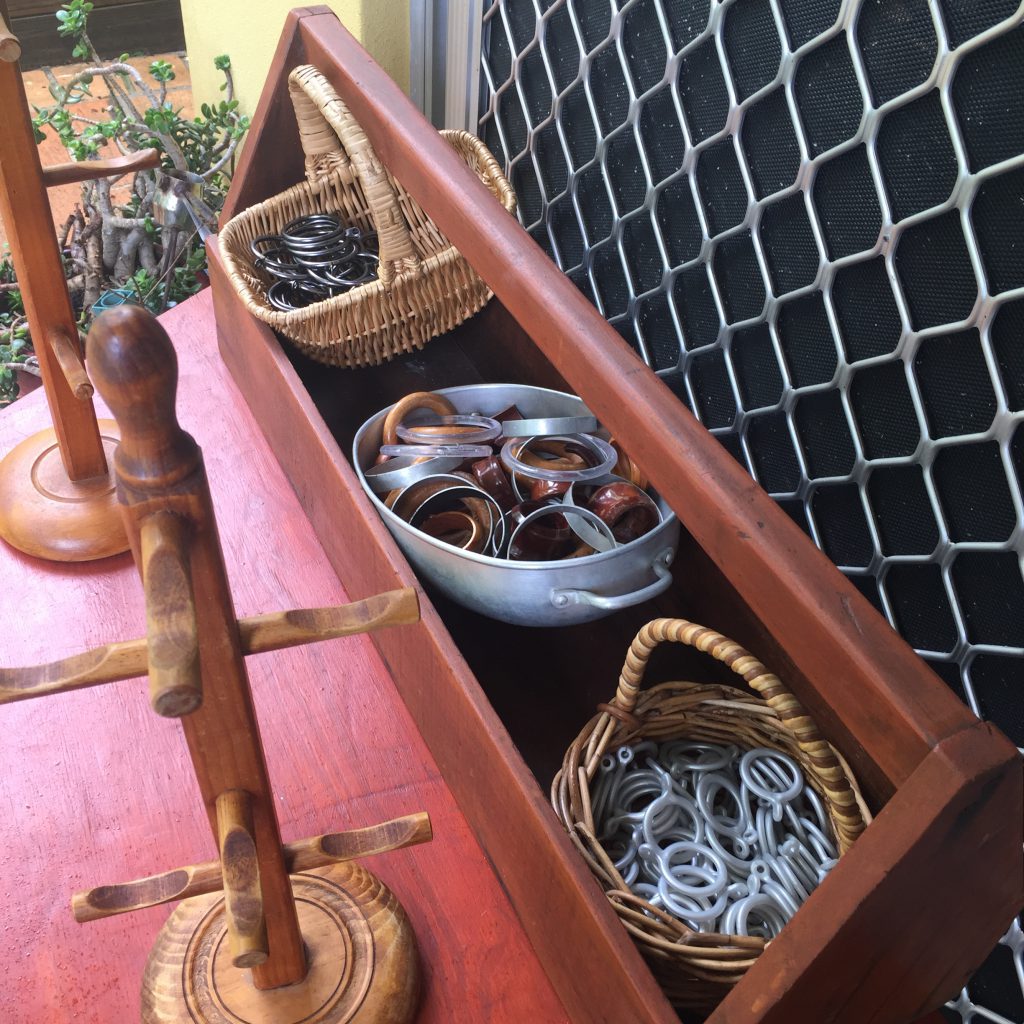
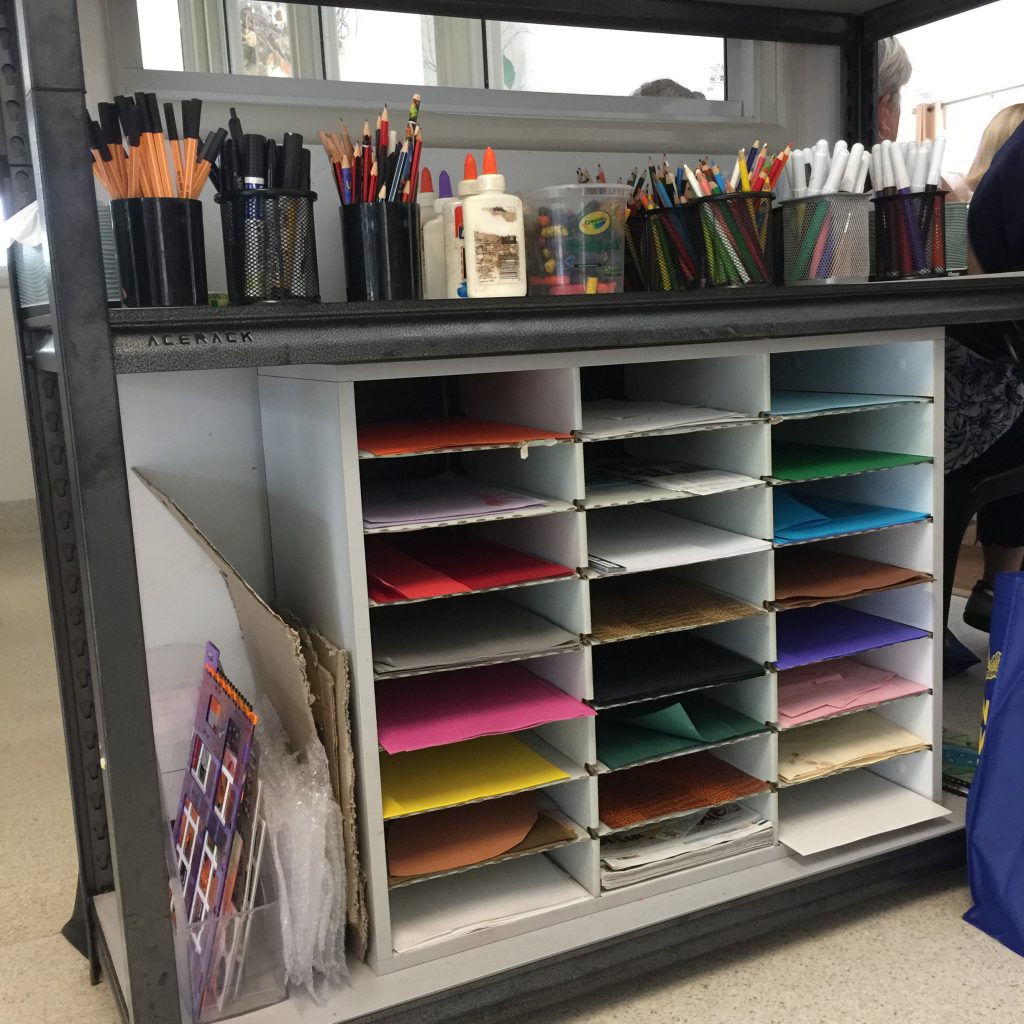
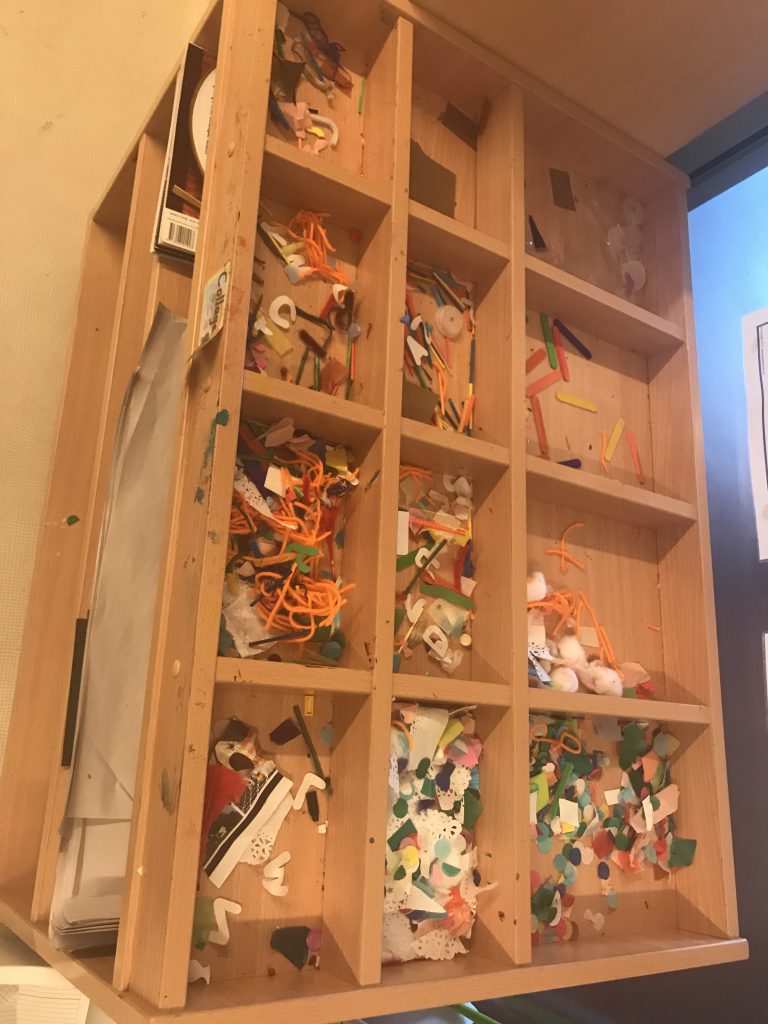
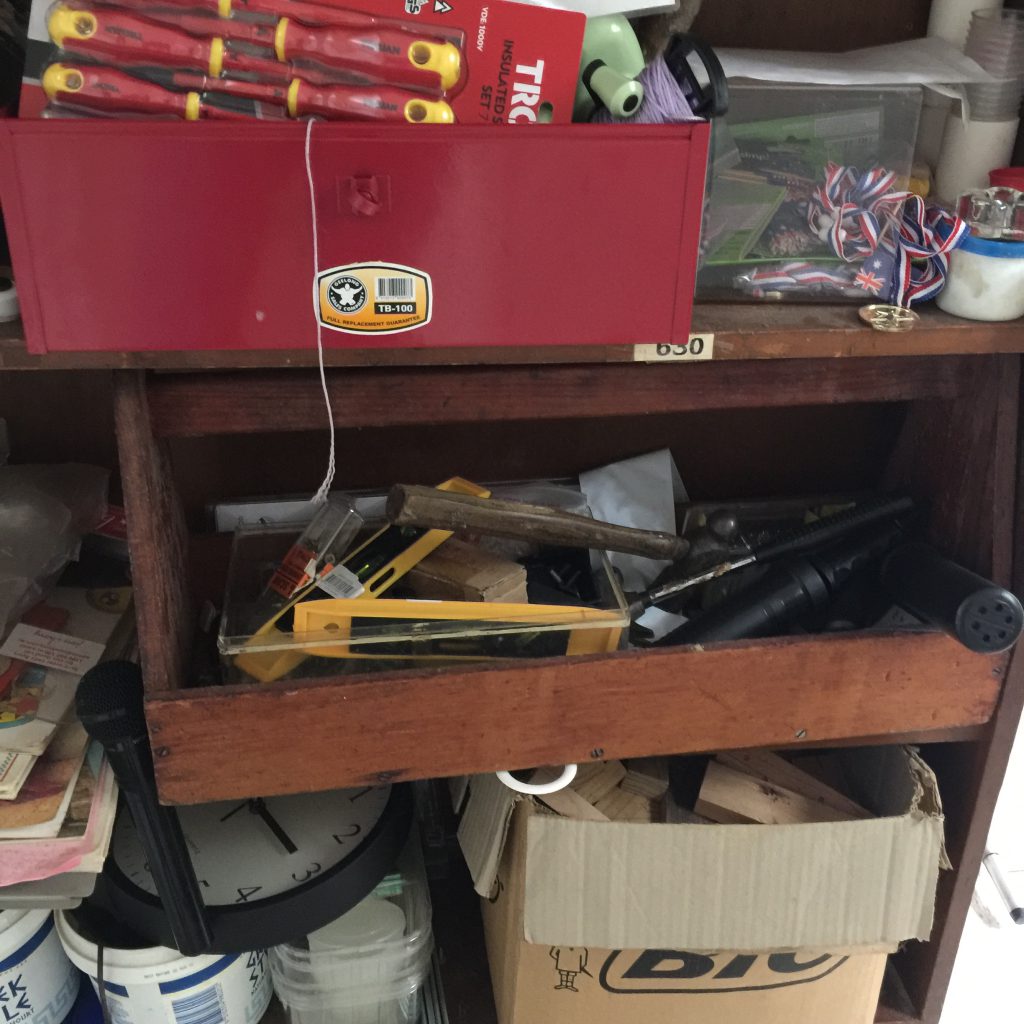
Final Play Gear Storage Thoughts
Thinking about how you store things may seem boring and unimportant, but investing time and thought into your play gear storage can empower children and improve the general flow of play. How you store things says a lot about your program’s philosophy. Reviewing how your program stores materials is, in part, an opportunity to analyze how well you’re living up to what it says in your marketing materials.
For example, a setting where the paint supplies are always out for use–or where Kim and her peers get that gear from child-accessible storage whenever they feel like painting–displays their belief that children are capable, trusted, and self-directed. This is a much different approach to early learning than a program where the painting gear is in teacher-only storage or deep storage.
Reviewing your play gear storage is well worth the effort. If you’re not convinced, check out 7 Reasons Play Gear Organization Is Important.
Brought to you by Explorations Early Learning
Contribute content to Playvolution HQ
Browse Trainings

Post Author
Jeff Johnson is an early learning trainer, podcaster, and author who founded Explorations Early Learning, Playvolution HQ, and Play Haven.

Leave a Reply